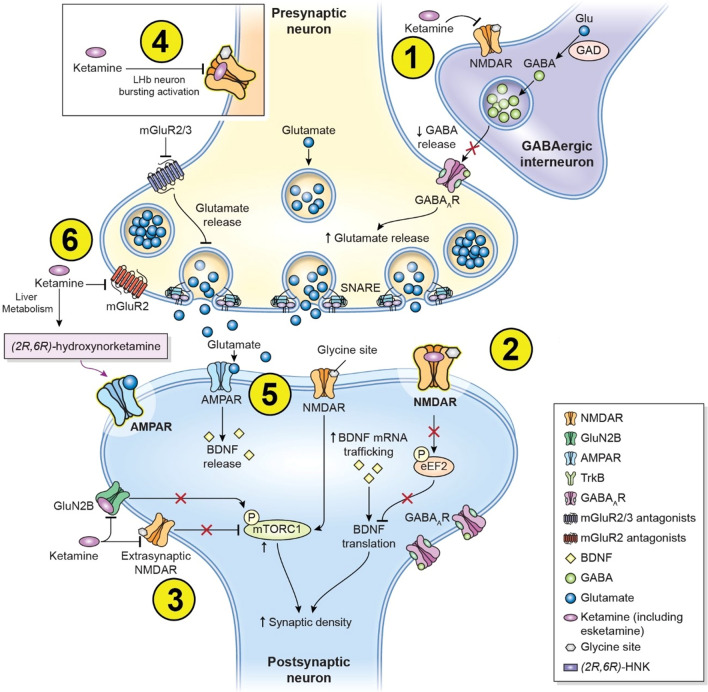Fig. 1.
Proposed mechanisms of action of ketamine and esketamine. Ketamine’s (and esketamine’s) actions at the glutamate receptor that may mediate antidepressant effects include: (1) blocking the N-methyl-D-aspartate (NMDA) receptor at the gamma aminobutyric acid (GABA)-ergic inhibitory interneuron, leading to disinhibition of presynaptic neurons and resulting in increased glutamate release into the synapse (disinhibition hypothesis). Other downstream molecular and cellular pathways have also been investigated to better understand ketamine’s rapid acting antidepressant properties and its effects on promoting neuroplasticity. These include: (2) inhibition of synaptic and (3) extra-synaptic NMDA receptors leading to intracellular pathways promoting neuroplasticity; (4) inhibitory effects of the NMDA receptor in the lateral habenula (LHb) neurons; (5) α-amino-3-hydroxy-5-methyl-4-isoxazolepropionic acid (AMPA) receptor activation from increased synaptic glutamate release and/or ketamine metabolites (e.g., (2R, 6R)-hydroxynorketamine (HNK)); and (6) presynaptic metabotropic glutamate receptor (mGluR) (group II) antagonism leading to enhanced glutamate release and subsequent AMPA receptor activation, leading to downstream molecular and cellular pathways promoting neuroplasticity. Adapted with permission from [21].

